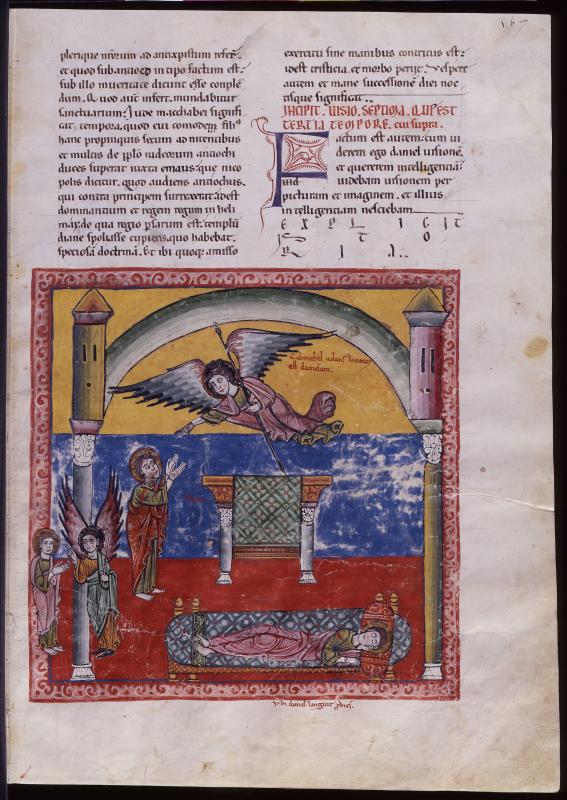
Commentary on the Apocalypse and commentary on the Book of Daniel
Purchased by J. Pierpont Morgan (1837-1913) in 1910
Daniel: Vision, Gabriel interpreting (Daniel 8:15-27, 9:20-27) -- Daniel, pearled nimbus, looking up at Gabriel, inscribed GABRIEHEL UOLANS LOCUTUS EST DANIELEM, pearled nimbus, holding staff, flying over draped altar, inscribed ALTARE.
Below, Daniel nimbed, addressed by angel, pearled nimbus, holding staff; to right, Daniel nimbed, asleep on bed; architectural frame.
Text is Jerome, In Danielem VIII.
Gabriel explains the vision of the battle of the ram (king of the Medes and Persians) and the goat (king of the Greeks), after which Daniel languished for some days. I, Daniel, understood from the book of Jeremiah that the desolation of Jerusalem would be completed in seventy years. And I thus prayed and made supplication to the Lord my God that his anger and fury might be turned away from Jerusalem. And while I was still praying the man Gabriel, whom I had seen in the vision flying swiftly, touched me at the time of the evening sacrifice. Seventy weeks of years are concentrated on your people and holy city, so that transgression shall be finished, and sin shall reach an end, and iniquity shall be wiped away, and so that everlasting justice shall be brought in, and vision and prophecy shall be fulfilled, and the saint of saints shall be anointed. (Dan. 8–9)
At left, Gabriel explains the battles to Daniel, after which he retires to bed. Above, he returns as Daniel offers evening sacrifice at the altar.
